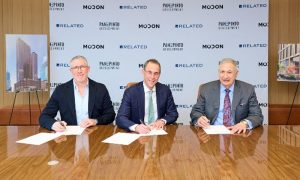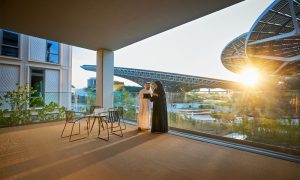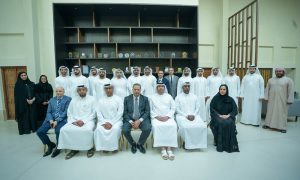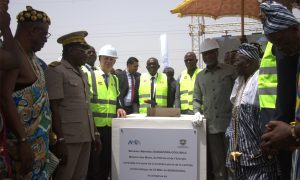Concrete reality
More efficient concrete equipment helping improve contract margins.
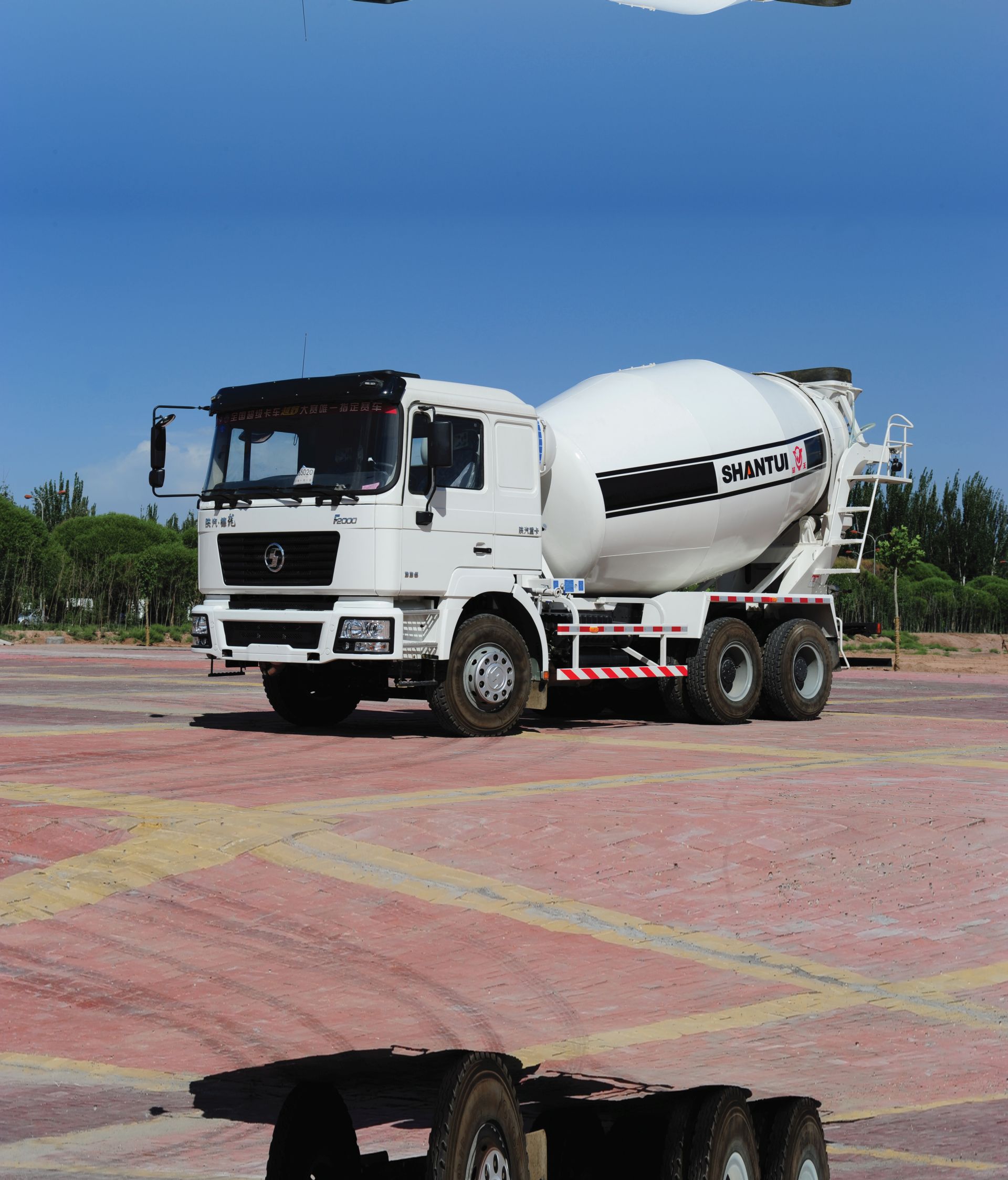
In an industry where the cost of raw materials can change overnight, and where any inefficiencies in the mix or loss of concrete will have an impact on a company’s bottom line, getting the right concrete equipment and keeping it performing is essential. Broadly speaking, there are three main areas of equipment – batching plants, concrete pumps and mixer trucks, as well as a range of support equipment – tasked with ensuring a steady flow of concrete to a job site. In the Middle East, German brand Liebherr is focused on selling batching plants, mixer trucks and recycling plants. In the area of batching plants, Liebherr distinguishes itself through the use of high quality steel for long life and durability, as Oliver Rduch, senior regional manager – Middle East in Liebherr’s concrete equipment division, told CMME.
They are also built with high-powered motors, essential since batching plants may run 24 hours a day, often for weeks at a time. And with maintenance practices in the region often quite poor, strong motors ensure that the batches continue to be forced through. He’s noticed that competing brands, says Rduch, stop and break down more frequently. An owner of a plant can expect it to be in use for at least 15-20 years without major overhauls, though Rduch knows of one plant in Kuwait that is close to 30 years old.
The other major aspect of a batching plant is its control system. In May this year Liebherr launchedits new Windows-based control system, MPS III, which uses a BUS system that sends electronic signals between the weighing cells and the control system, giving a lightning fast response. “This means that when the needed weight on the load cells has been reached, there is a much faster cut-off time so that you don’t add additional materials that are not catered for within the mix recipe,” explains Rduch.
“You get optimal speed within the batching and weighing system, but also the optimal amount.
Cement, fly ash and microsilica are very expensive, so if you can save even just 5% per year you’re making big winnings.”
The need for accurate systems is essential, especially when the price of concrete is low. Rduch says that on a recent trip to Qatar there were numerous complaints that the price of concrete has actually fallen below the price of the raw materials. Prices for concrete also remain stubbornly low in the UAE.
“When you’re reaching such poor pricing levels, it’s important to have a system that is accurate and you can rely on, and that you can use to economise on your costs as much as possible.”
Rduch is also seeing demand grow for mobile batching plants, especially for job sites in congested areas. Having concrete production on-site reduces the number of expensive mixer trucks needed to transport it, and it can also prove more environmentally friendly, and has in special cases been requested by the client.
As concrete is transported from the batching plant to the pour site, it is the concrete pump which is the key machine in the process. If a breakdown occurs during a major pour, a significant amount of concrete can be lost, and the pour may even have to be restarted. Concrete pumps from Chinese equipment manufacturers, notably Sany and Zoomlion, have long been popular in the Middle East, with many truck-mounted pumps and stationary placing booms sold into the region during the boom years.Subsequently, both companies purchased European manufacturers – Zoomlion bought CIFA in 2008, and Sany acquired Putzmeister in 2012 – and in both cases the parent company brand and the acquisition remain active in the market, in two different tiers – premium and value. Nevertheless, the acquisitions did give both Chinese manufacturers access to a high level of technology and engineering know-how.
Zoomlion has perhaps been the most vocal about its achievements in the R&D field, with its ‘101m’ the Guinness World Record-holder for longest boom, a 101-metre concrete pump which – built using four carbon fibre sections out of the total seven boom pieces – was the result of joint efforts between Zoomlion and CIFA’s R&D teams.
Nevertheless, while the 101-metre pump is something of a showpiece, with limited genuine massmarket utility (if only because of the cost of the seven-axle, 18.5-metre Scania truck it is built over), Zoomlion has made inroads into the region in the boom classes more commonly used by ready-mix companies. Of all the brand’s five product lines (concrete, construction cranes, mobile cranes, earthmoving and sanitation vehicles), concrete equipment has the largest allocation of sales and support staff in the region, and it has four exclusive distributors and one non-exclusive seller in the Gulf.
Earlier this year it reported a sale worth in excess of $1 million to a Kuwaiti ready-mix company, following the CEO’s examination of a 43m truck pump in action with an existing ready-mix customer in Fujairah.
Saudi Arabia is the largest market for concrete pumps in the GCC, and the market is seen as a key growth opportunity on a global sale. The Korean brand JunJin offers a product attractive to the value segment, sold by KiCE Construction Equipment in Saudi Arabia, a company which also manufactures a range of static and portable batching plants, as wellas offering concrete cooling systems. This year, JunJin launched its new pump, the XZZ28-5.11HP, built with a five-section boom. The biggest advantage of the model, mounted on an HD Chassis, is its total length – under 9m – meaning it can squeeze through cramped residential streets for pours on villa projects.
In late 2012, Liebherr acquired the concrete pump manufacturer Waitzinger, and while it has embarked on a process of optimising the manufacturing processes at the Waitzinger plant in Neu-Ulm, Germany, the limited supply of pumps it can produce means that the Middle East is not yet a priority for the brand, with its activities restricted to supporting the existing population of pumps already here. Once the production output is increased, other markets will eventually be targeted, including the Middle East.
In the mixer truck sector, Chinese manufacturers have also been able to find favour with buyers, especially since the mixer drums are often built over vehicles that are cheaper than the European premium models. It’s a chance for major up-front savings, as the truck is much more expensive than the mixer unit – perhaps as much as three quarters of the total cost comes from the truck, and only a quarter from the mixer unit. Shantui, for example, has reported significant sales of its mixer trucks, this year reporting a sale of 50 mixers sold in the Emirates, worth $3.2m, through its local agent. Given the relatively small number of ready-mix companies in any market, breaking down the door with a sale to a major firm is seen as an important market success, and Shantui heralded the sale – to one of the largest ready-mix concrete firms in the Middle East – as a breakthrough.
“Over the past year, Shantui has focused on localising its sales, relying on dealers to tap into customer demand and connect with end users. The local sales staff works in tandem with Shantui to connect Shantui’s unbeatable value chain all the way from the factory to the job site, providing after sales support, networking with customers and gaining trust. The sale of 50 units of concrete machinery was the fruit of this effort,” said Jackie Chang, Shantui’s Middle East regional sales manager.
Making up the majority of the order – and its most popular truck mixer in the Middle East – was the 12-cubic-meter capacity HJC5256GJB3 concrete truck mixer. The variant of the HJC5256GJB3 sold in the GCC has undergone 11 variations from the standard model sold in China, to both make it suitable for the environments of Middle East job sites and meet GCC import standards. These variations include anti-corrosion steel and high temperature proofing key components such as the engine and hydraulic pump. The mixer (pictured) is built over a Shaanqi chassis and powered by a Weichai turbo-charged engine.
Like its batching plants, the drums on Liebherr’s concrete mixer trucks are known for being hard Liebherr prides itself on building long-lasting concrete batching plants, using tough steel and high-powered motors, which help negate poor maintenance habits.
wearing, and steel producer Thyssen-Krupp even has a special steel blend that it supplies exclusively to Liebherr, LH 37, referred to as a diamond steel for its hard-wearing characteristics, so owners get the maximum life out of a drum. The drum is built to be as close as possible to the chassis frame, to lower the centre of gravity and increase the stability of the vehicle while cornering or on hills.
“We build a frame upon which the drum sits for each chassis individually. We make sure that the quality of the frame is the same as the chassis, so that they work together when there is friction and movement between mixer frame and the chassis frame,” explains Rduch.
Buyers of a mixer drum can have Liebherr buy the customer’s specif ied vehicle direct from the manufacturer, or they can buy from their local vehicle dealer. If it’s a European vehicle, the drum will be installed on the chassis in the Liebherr factory in Germany – mounted, painted and tested – then shipped RoRo to the Middle East. If the vehicle is from Asia, Liebherr has a factory in China where the process can be carried out.
